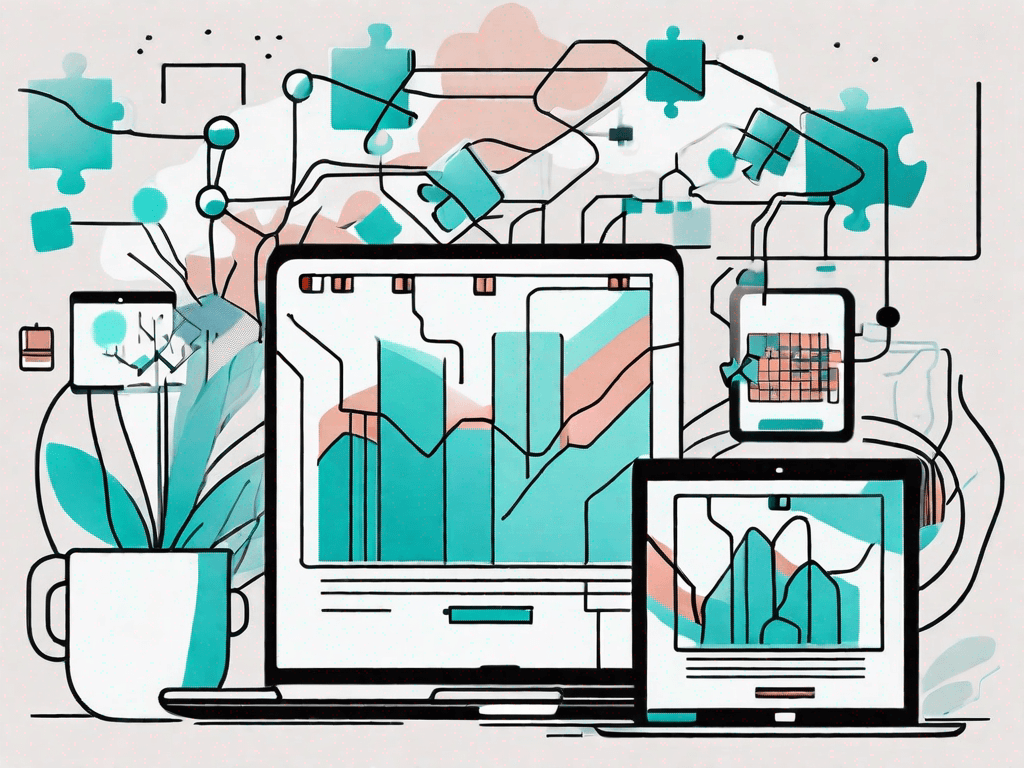Employee engagement activities are a crucial aspect of any organization’s success. They play a pivotal role in boosting morale, productivity, and overall job satisfaction among employees. In today’s digital era, remote work and virtual collaboration are becoming increasingly common. And online engagement activities have become more important than ever.
This article aims to explore the importance of employee engagement activities for online employees. Additionally, it explores how implementing online employee engagement ideas and strategies help enhance morale and productivity in a remote work environment.

Understanding the Importance of Employee Engagement Activities
Employee engagement goes beyond just employee satisfaction. It refers to the emotional commitment employees have towards their work, the organization, and its goals. Engaged employees are more likely to be motivated, productive, and proactive in their roles. They are enthusiastic about their work, take ownership of their responsibilities, and actively contribute to the company’s success. On the other hand, disengaged employees tend to lack motivation, have lower productivity levels, and may be more prone to turnover.
When employees are engaged, they feel a sense of purpose and connection to their work. They understand how their individual contributions fit into the larger picture and how their efforts directly impact the organization’s success. This understanding creates a sense of fulfillment and satisfaction, leading to higher levels of engagement.
Engaged employees also tend to have better relationships with their colleagues and managers. They are more likely to collaborate, communicate effectively, and support one another. This positive work environment fosters creativity, innovation, and a sense of belonging.
The Connection Between Morale and Productivity
One of the key factors influencing employee engagement is morale. Morale refers to the overall satisfaction, well-being, and enthusiasm of employees within the workplace. High morale leads to increased productivity, teamwork, and loyalty, while low morale can have the opposite effect.
Organizations that prioritize employee morale understand the impact it has on productivity and overall business success. They invest in creating a positive work culture that values employee well-being and recognizes their contributions. This can be done through various initiatives such as employee recognition programs, wellness initiatives, and opportunities for professional development.
When employees feel valued and supported, they are more likely to be engaged and motivated to perform at their best. They are willing to go the extra mile, take on new challenges, and contribute innovative ideas to drive the organization forward.
The Role of Online Engagement in Remote Work
In the era of remote work, where teams are scattered across different locations and time zones, maintaining employee engagement becomes even more challenging. In a traditional office setting, employees have face-to-face interactions and a sense of camaraderie, which can contribute to engagement. However, with remote work, organizations need to find alternative ways to foster connection, collaboration, and engagement.
Online engagement activities play a crucial role in keeping remote employees connected and engaged. Virtual team-building activities, online communication tools, and digital platforms for sharing ideas and updates can help bridge the gap created by physical distance. These activities enable employees to interact, build relationships, and feel connected to their colleagues and the organization as a whole.
Organizations can also leverage technology to provide remote employees with opportunities for professional development and growth. Online training programs, webinars, and virtual conferences allow employees to enhance their skills and knowledge, contributing to their engagement and overall job satisfaction.
By prioritizing online engagement in remote work settings, organizations can create a sense of community, foster collaboration, and ensure that employees feel supported and connected, regardless of their physical location.
Types of Online Employee Engagement Activities
To effectively engage remote employees, organizations can leverage various types of online engagement activities. These activities aim to replicate the benefits of in-person interactions and create a sense of belonging and connection. Here are some popular online engagement activities:
Virtual Team Building Exercises
Virtual team building exercises are designed to build camaraderie, improve communication, and promote teamwork among remote employees. These activities can include virtual icebreakers, online games, or collaborative projects that encourage employees to work together and build relationships despite the physical distance.
For example, organizations can organize virtual scavenger hunts where employees have to find specific items within their homes and share pictures with their teammates. This not only encourages teamwork but also adds an element of fun and excitement to the remote work environment.
In addition, virtual escape rooms are gaining popularity as team building activities. These online escape rooms require employees to solve puzzles and work together to escape a virtual room within a given time frame. Such activities not only foster collaboration but also enhance problem-solving skills and critical thinking abilities.
Online Training and Development Opportunities
Providing online training and development opportunities is an excellent way to engage employees and help them grow professionally. Whether through webinars, e-learning platforms, or virtual workshops, organizations can empower employees with new skills and knowledge, keeping them motivated and invested in their professional development.
Organizations can offer a wide range of online training programs to cater to different employee needs. These programs can include leadership development courses, technical skill workshops, or even personal development sessions such as mindfulness and stress management. By investing in their employees’ growth, organizations not only enhance employee engagement but also foster a culture of continuous learning and development.
Interactive Online Meetings and Workshops
Engaging remote employees in meetings and workshops can be challenging, as attention spans may waver due to distractions. However, incorporating interactive elements such as polls, quizzes, shared documents, and breakout rooms can make these sessions more engaging and interactive. Interactive meetings allow employees to actively participate, share ideas, and collaborate effectively, making the most out of virtual gatherings.
One effective way to make online meetings more interactive is by using real-time polling tools. These tools allow participants to vote on specific topics or provide feedback instantly. This not only encourages active participation but also provides valuable insights that can drive meaningful discussions and decision-making.
Furthermore, breakout rooms can be utilized during virtual workshops to facilitate small group discussions and brainstorming sessions. By dividing participants into smaller groups, remote employees can engage in more focused conversations and collaborate closely with their peers. This fosters a sense of connection and teamwork, even in a virtual setting.
Organizations have a wide range of online engagement activities at their disposal to effectively engage remote employees. By incorporating virtual team building exercises, providing online training and development opportunities, and making online meetings and workshops interactive, organizations can create a sense of belonging and connection among their remote workforce.
Employee Engagement Activities: Easy Ideas to Explore
Virtual Icebreakers:
- Two Truths and a Lie: Have team members share two true statements and one false one about themselves. Colleagues then guess which statement is the lie, encouraging interaction and learning about each other.
- Emoji Introductions: Ask team members to introduce themselves using only emojis, adding a creative and fun twist to virtual introductions.
- Virtual Scavenger Hunt: Organize a virtual scavenger hunt where team members search their homes for specific items, creating a lighthearted and engaging atmosphere.
Engagement Ideas with Collaborative Projects:
- Digital Brainstorming Sessions: Utilize virtual whiteboards for collaborative brainstorming sessions, allowing team members to contribute ideas and insights in real-time.
- Cross-Functional Project Teams: Form cross-functional project teams to encourage collaboration among colleagues from different departments, fostering a sense of unity and diverse perspectives.
- Shared Project Dashboards: Use project management tools with shared dashboards to keep everyone updated on project progress, promoting transparency and collaboration.
Relationship Building Activities:
- Virtual Coffee Breaks: Schedule informal virtual coffee breaks or lunch sessions, providing an opportunity for team members to connect on a personal level.
- Employee Spotlights: Highlight individual team members through regular employee spotlights, allowing others to learn about their interests, hobbies, and contributions.
- Peer-to-Peer Recognition: Implement a peer recognition program where team members can publicly acknowledge and appreciate each other’s efforts, strengthening relationships within the team.
Team Spirit Ideas:
- Themed Dress-Up Days: Organize themed dress-up days, encouraging team members to showcase their creativity and team spirit during virtual meetings.
- Team Challenges: Initiate friendly team challenges, such as fitness or wellness challenges, fostering a sense of unity and shared goals.
- Virtual Team Building Games: Engage in online team-building games that promote collaboration and team spirit, creating a positive and inclusive atmosphere.
Team Engagement Problem-Solving:
- Virtual Escape Rooms: Participate in virtual escape room challenges, where teams collaborate to solve puzzles and overcome challenges within a set timeframe.
- Problem-Solving Workshops: Conduct problem-solving workshops to enhance critical thinking skills, encouraging teams to collaborate on real-life scenarios.
- Innovation Challenges: Encourage employees to submit innovative ideas to address specific challenges faced by the organization, fostering a culture of continuous improvement.
Webinars for Employee Engagement:
- Expert Speaker Series: Organize webinars featuring industry experts or thought leaders to provide valuable insights and learning opportunities for team members.
- Skill-sharing Webinars: Encourage internal knowledge sharing by hosting webinars where employees can showcase their expertise and teach specific skills to their colleagues.
- Q&A Sessions: Conduct interactive webinars with leaders or key team members, allowing others to ask questions and gain deeper insights into various aspects of the organization.
Skill Enhancement Employee Engagement Ideas:
- Online Learning Platforms: Provide access to online learning platforms or courses, empowering employees to enhance their skills and stay updated in their respective fields.
- Skill Swap Sessions: Facilitate sessions where team members can share their skills with others, fostering a collaborative learning environment within the team.
- Skill-building Challenges: Launch skill-building challenges or competitions where employees can showcase newly acquired skills, promoting continuous learning and improvement.
Personal Development Activities:
- Goal-setting Workshops: Conduct workshops on setting personal and professional goals, empowering employees to focus on their development and career aspirations.
- Mentorship Programs: Establish mentorship programs that pair experienced employees with those seeking guidance and support in their personal and professional growth.
- Book Club for Personal Development: Start a virtual book club focused on personal development literature, encouraging team members to read and discuss relevant books together.
Learning About the Organization:
- Company History Sessions: Host sessions where leaders or long-term employees share the company’s history, evolution, and key milestones.
- Virtual Office Tours: Provide virtual tours of the physical office space, allowing remote team members to familiarize themselves with the work environment.
- Organizational Values Discussions: Facilitate discussions around the company’s values, mission, and vision, reinforcing a sense of purpose and shared identity.
Breakout Rooms:
- Brainstorming Breakouts: Use breakout rooms during meetings for smaller group brainstorming sessions, fostering more in-depth discussions and idea generation.
- Cross-Functional Collaboration Rooms: Create breakout rooms where employees from different departments collaborate on specific projects or challenges.
- Virtual Coffee Break Rooms: Designate breakout rooms during virtual coffee breaks for more intimate and casual conversations among team members.
Mock Round Table Conferences:
- Industry Trend Discussions: Conduct mock round table conferences where employees discuss current industry trends, fostering a deeper understanding of the market landscape.
- Cross-Departmental Strategy Sessions: Simulate round table conferences focused on strategic planning, bringing together representatives from different departments to contribute to organizational goals.
- Problem-solving Round Tables: Host round table discussions to address specific challenges faced by the organization, encouraging diverse perspectives in finding solutions.
Storytelling Ideas:
- Employee Success Stories: Feature employee success stories in internal communications, celebrating achievements and highlighting individual contributions.
- Company Milestone Narratives: Share narratives that commemorate significant company milestones, fostering a sense of pride and shared history among team members.
- Team Building through Storytelling: Encourage team members to share personal or work-related stories during team-building activities, creating a stronger sense of connection and understanding.
Opinion Poll Ideas:
Use polls to gather team members’ opinions on various topics, encouraging active participation and providing valuable insights for decision-making.
- Innovation in the Workplace: Employee Perspectives
- Remote Work Preferences: Shaping the Future of Work
- Employee Wellness Initiatives: What Works Best?
- Flexible Work Hours: Team Preferences and Productivity
- Training and Development Priorities: Employee Feedback
- Company Culture Check: Employee Perceptions
- Recognition and Rewards Preferences: Employee Choices
- Communication Effectiveness: Team Input
- Workplace Diversity and Inclusion: Employee Perspectives
- Team Building Activities: Preferences and Engagement
Preference Poll Ideas:
Conduct polls to determine preferences for upcoming team activities, ensuring that engagement initiatives align with the interests of the majority.
- Team Building Adventure: Choose Your Thrill
- Wellness Week Preferences: Your Path to Wellness
- Creative Workshop Choices: Art, Music, or Writing?
- Outdoor Team Retreat: Pick Your Setting
- Learning Lunch Series: Choose Your Topics
- Holiday Celebration Ideas: Your Festive Choices
- Professional Development Workshops: Select Your Focus
- Virtual Game Night: Vote for Your Favorites
- Fitness Challenge Themes: Your Workout, Your Way
- Volunteer Opportunities: Choose Your Cause
Feedback Poll Ideas:
Utilize polls to collect feedback on recent engagement activities, allowing for continuous improvement based on the team’s preferences and suggestions.
- Team-Building Workshop Evaluation: Your Insights Matter
- Wellness Program Feedback: Your Thoughts on Wellness
- Learning and Development Session Review: Share Your Feedback
- Holiday Celebration Evaluation: Your Festive Feedback
- Recognition and Rewards Program Review: Your Recognition Experience
- Communication Channel Assessment: Your Input Counts
- Virtual Team Bonding Event Review: Share Your Experience
- Professional Development Workshop Assessment: Your Learning Journey
- Employee Recognition Survey: Your Recognition Preferences
- Team Retreat Evaluation: Your Retreat Experience
Know Thy Colleague:
- Employee Spotlights: Regularly feature employee spotlights that delve into individual interests, hobbies, and professional achievements, fostering a deeper understanding among colleagues.
- Virtual Coffee Chats: Facilitate virtual coffee chats where employees can pair up randomly to discuss non-work-related topics and get to know each other better.
- Trivia Nights: Organize virtual trivia nights where team members answer questions about their colleagues, promoting a fun and interactive way to learn more about one another.
Engagement Ideas for Internal Social Platform:
- Employee Recognition Wall: Create an internal social platform feature where employees can publicly recognize and appreciate their colleagues’ achievements.
- Interest-Based Groups: Establish groups within the internal platform based on shared interests, hobbies, or professional aspirations, promoting connections beyond immediate teams.
- Announcement Channels: Utilize the platform for company-wide announcements, updates, and celebrations, ensuring transparent communication across the organization.
Gamified Contest Ideas:
- Monthly Challenges: Introduce monthly gamified challenges that encourage healthy competition and engagement, with rewards for top performers.
- Virtual Game Tournaments: Organize virtual game tournaments where employees can participate in friendly competitions, fostering team spirit and camaraderie.
- Recognition Leaderboards: Implement a gamified recognition system with leaderboards, showcasing top contributors and encouraging continuous participation.
Fastest-Finger First on the Communications Platform:
- Real-time Decision-making Challenges: Simulate real-time decision-making challenges on the communications platform, encouraging quick thinking and efficient communication.
- Instant Polls and Surveys: Conduct instant polls or surveys on the platform for immediate feedback, involving employees in decision-making processes in a timely manner.
- Emergency Response Simulations: Use the platform for emergency response simulations, ensuring that employees can react promptly and efficiently to unexpected scenarios.
Implementing Online Engagement Activities
Implementing online engagement activities requires careful planning and consideration. Here are some factors to consider:
Choosing the Right Employee Engagement Activities for Your Team
When selecting online engagement activities, it’s essential to consider the needs and preferences of your team. Conduct surveys or gather feedback from employees to understand their interests and expectations. By aligning the activities with their preferences, you can maximize participation and engagement.
For example, if your team consists of individuals who enjoy physical activities, you could consider incorporating virtual fitness challenges or step competitions. This not only promotes employee well-being but also encourages friendly competition and team bonding.
On the other hand, if your team is more inclined towards creative pursuits, you could organize virtual art workshops or design contests. This allows employees to showcase their talents and express their creativity while fostering a sense of community within the organization.
Scheduling and Planning for Maximum Participation
Emails and workplace chat platforms may not be sufficient to ensure employees are aware of and engaged in online activities. Utilizing a platform like HubEngage, which provides communication channels like mobile apps, web, email, SMS, and digital signage, can help reach and engage all employees effectively. By leveraging multiple channels, organizations can ensure maximum participation in online engagement activities.
When planning the schedule for online engagement activities, it’s crucial to consider the availability and time zones of your employees. By offering a variety of time slots and accommodating different schedules, you can increase the likelihood of participation from a diverse range of team members.
Additionally, it’s important to create a clear and concise communication plan to inform employees about upcoming activities. This can include sending out regular reminders, sharing engaging teasers or sneak peeks, and providing detailed instructions on how to participate. By building anticipation and excitement, you can generate higher levels of engagement and involvement.
Using Technology to Facilitate Employee Engagement Ideas
Technology plays a vital role in facilitating online engagement activities. Platforms like HubEngage offer a wide range of features such as real-time notifications, gamification, discussion forums, and surveys to engage employees. These interactive elements create a more dynamic and engaging online environment, fostering connections and boosting morale.
Real-time notifications can be used to send timely updates and reminders about ongoing activities, ensuring that employees stay informed and engaged. Gamification features, such as leaderboards and badges, can add an element of friendly competition and motivate employees to actively participate and excel in the online engagement activities.
Discussion forums provide a platform for employees to share their thoughts, ideas, and feedback, fostering open communication and collaboration. This not only allows employees to feel heard and valued but also encourages the exchange of knowledge and insights within the organization.
Enterprise surveys can be used to gather feedback and measure the effectiveness of online engagement activities. By regularly seeking input from employees, organizations can continuously improve and tailor their initiatives to better meet the needs and preferences of their team.
Implementing online engagement activities requires careful consideration of the team’s preferences, effective scheduling and planning, and the use of technology to facilitate engagement. By creating a diverse range of activities, utilizing multiple communication channels, and leveraging interactive features, organizations can foster a vibrant and engaging online environment for their employees.
Measuring the Impact of Online Employee Engagement Activities
To ensure the effectiveness of online engagement activities and make data-driven decisions, organizations need to measure their impact. Here are some key considerations:
Key Performance Indicators for Employee Engagement Ideas
Organizations can track key performance indicators (KPIs) related to employee engagement, such as employee satisfaction scores, productivity levels, and retention rates. By regularly monitoring these metrics, they can assess the impact of online engagement activities on employee engagement and make adjustments as needed.
Employee satisfaction scores provide valuable insights into the overall happiness and contentment of employees within the organization. Higher scores indicate a positive work environment and strong employee engagement. Productivity levels, on the other hand, measure the efficiency and output of employees. By tracking productivity levels in relation to online engagement activities, organizations can determine if these activities are positively impacting employee performance.
Retention rates are another important KPI to consider. High retention rates indicate that employees are satisfied and engaged, as they choose to stay with the organization. By comparing retention rates before and after implementing online engagement activities, organizations can gauge their impact on employee loyalty and commitment.
Employee Engagement Activities Feedback and Evaluation Methods
Collecting feedback from employees about their experience with online engagement activities is vital. Surveys, anonymous feedback forms, and focus groups can provide valuable insights into what is working well and areas that need improvement. Regularly evaluating the effectiveness of the activities allows organizations to refine their strategies and ensure continuous improvement.
Surveys can be designed to gather specific feedback on various aspects of online engagement activities, such as the relevance of content, ease of participation, and overall satisfaction. Anonymous feedback forms provide employees with a safe space to express their opinions and suggestions without fear of repercussions. Focus groups allow for in-depth discussions and exploration of employee experiences, providing rich qualitative data.
By analyzing the feedback received, organizations can identify trends, common themes, and areas of improvement. This information can then be used to make informed decisions about adjusting online engagement strategies to better meet the needs and preferences of employees.
Adjusting Employee Engagement Ideas Strategy Based on Results
Data and feedback collected from online engagement activities should guide the organization in refining their strategies. By analyzing the results, organizations can identify patterns, success factors, and areas that require adjustments. Adapting the strategies based on the insights gained will lead to more effective online engagement activities and improved morale and productivity among employees.
For example, if survey results indicate that employees prefer interactive activities such as virtual team-building exercises over passive activities like webinars, organizations can prioritize and allocate resources accordingly. Additionally, if feedback suggests that certain topics or themes are more engaging to employees, organizations can tailor their content to align with these preferences.
Regularly reviewing and adjusting strategies based on data and feedback is crucial for the ongoing success of online engagement activities. It ensures that the activities remain relevant, engaging, and impactful, ultimately contributing to a positive work environment and increased employee satisfaction.
Online engagement activities play a crucial role in boosting employee morale and productivity, especially in a remote work environment. By leveraging various types of activities, implementing them with the help of platforms like HubEngage, and continuously measuring their impact, organizations can foster a positive work environment, enhance employee engagement, and drive overall success.
Ready to elevate your online employee engagement and unite your team with a single, powerful platform?
Experience the transformative power of HubEngage.
Fostering a workplace environment that prioritizes employee engagement is paramount for achieving enhanced productivity and overall organizational success. As we’ve explored various employee engagement activities and ideas throughout this blog, it becomes evident that investing in a comprehensive platform is essential to seamlessly integrate and amplify these initiatives. For organizations aspiring to go beyond the conventional and embrace a solution with the most extensive features, HubEngage stands out as the ultimate go-to. With its all-encompassing suite of tools, personalized content delivery, and innovative features, HubEngage empowers businesses to not just meet but exceed their employee engagement goals. Elevate your workforce experience, boost productivity, and create a workplace where every team member thrives—make HubEngage your strategic partner in cultivating a culture of sustained engagement and success.
See a demo today and witness firsthand how HubEngage can revolutionize the way you connect with your employees.













